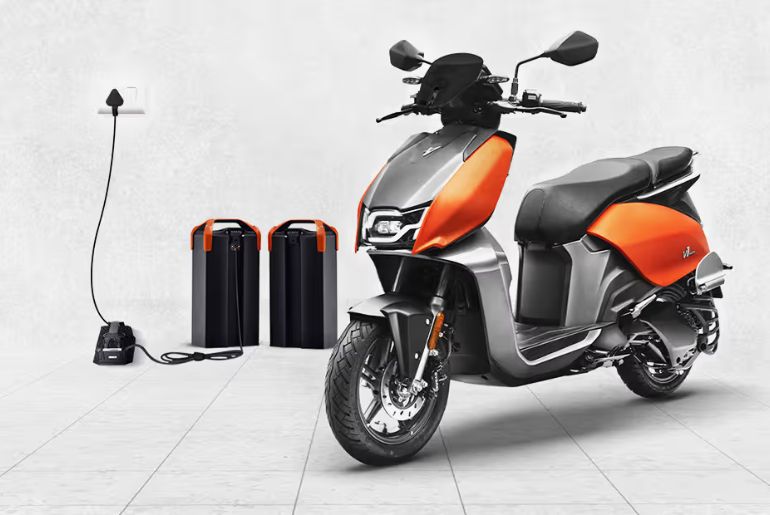Hero MotoCorp unveiled its eagerly awaited Vida VX scooter series in what can only be called a high-stakes bid to regain its relevance in the electric vehicle race. However, this was not your typical product launch. Hero has made its biggest and most disruptive move to date with an aggressive ex-showroom price of ₹99,490 and a groundbreaking Battery-as-a-Service (BaaS) model that lowers the upfront cost to an astounding ₹59,490.
For a brand that has been a paradox up until now, its launch represents a total strategic reset rather than just a course correction. Hero’s response to a crucial query that has dogged the company since 2022 is the Vida VX: why has the biggest two-wheeler manufacturer in the world lagged behind in the electric revolution?
A Path of Unrecognised Potential
Expectations were extremely high when Hero MotoCorp launched the Vida V1 into the EV market in October 2022. However, the debut was a careful, premium-focused event that was only available in three locations and had costs as high as ₹1.59 lakh. The reaction of the market was ambivalent.
Vida has continuously underperformed even though it boasts what is likely one of the most useful product features in the market—dual detachable batteries that provide millions of flat dwellers with a solution to their charging problem. Vida stayed in fifth place, enjoying monthly sales of about 7,000 units while its competitors fought in the 20,000–30,000 unit area. This was in contrast to heritage rivals like TVS and Bajaj, who were able to successfully modify their strategy to counter the early dominance of startups Ola and Ather.
The brand’s enormous on-paper advantages, such as the enormous network of more than 6,000 service touchpoints and the trust that comes with the Hero name, could not transfer into market share. Data indicates that a fundamental gap with the modern EV consumer was the cause.
Applying an outdated technique to a modern market was a classic example of Vida’s first approach. Vida launched a string of expensive, low-impact advertisements by contracting with internationally recognised but conventional agencies like Wieden+Kennedy to handle its brand-building. Millions were spent on high-profile celebrity endorsements with Bollywood stars Anil and Ranbir Kapoor, as well as primetime IPL commercial spaces for its “Charging Simple Hai” campaign.
Consequently, there was a serious “buzz deficit”. Even during its most costly efforts, Vida’s search interest was continually flatlining at the bottom of the list, according to Google Trends data. For example, on the same day, the celebrity-led drive created less than a sixth of its competitors’ online curiosity. Vida was delivering a message that the market wasn’t paying attention to, while rivals like Ola created a tribe of tech enthusiasts, Ather fostered a network of tech enthusiasts, and Bajaj skilfully used nostalgia. It failed to recognise the impact of a focused, event-driven launch, a tactic that helped companies like Tata and Mahindra secure tens of thousands of pre-bookings by establishing a single, irreplaceable moment.
The launch indicates that Hero has not only listened but has also started over. The Vida VX portfolio directly targets the mainstream market by addressing the primary obstacle to EV adoption: cost.
- The Right Product, The Right Price: The Vida VX, expected to be a re-engineered and more practical version of the concepts showcased earlier, is priced at ₹99,490 (ex-showroom). This positions it aggressively against the entry-level variants of the TVS iQube and Bajaj Chetak, finally giving budget-conscious consumers a compelling reason to consider a Vida.
- The BaaS Revolution: The true masterstroke is the introduction of the Battery-as-a-Service (BaaS) model. This allows customers to purchase the scooter for an unprecedented amount.
₹59,490 and subscribe to the battery on a pay-per-use basis at ₹0.96 per kilometre. This innovative model completely reframes the ownership equation. It removes the single most expensive component from the upfront cost, transfers the risk of battery degradation from the consumer to the company, and offers unparalleled flexibility.
The “what” of Vida’s approach is at last in step with the realities of the market thanks to the new VX portfolio and its disruptive pricing. The “how” is also being redesigned, as seen by the recent campaigns’ hiring of new creative partners and a more general need for a new media pitch.
But the way forward calls for more than a novel product and a shrewd price strategy. It necessitates a total change in marketing. Vida must now use its extensive network of dealerships as community centres as well as sales locations. It must develop a story around its useful improvements, such as the detachable batteries and the BaaS model’s increased accessibility.
Hero MotoCorp has accomplished more today than merely introducing a new scooter. For Vida, it has introduced a new, more assertive, and far more appealing persona. Finally, the pricing and hardware are set. Whether the brand can now generate the excitement it sorely lacked is the only question that remains. The sleeping titan of the two-wheeler world might finally come to life in the electric age if it can.

